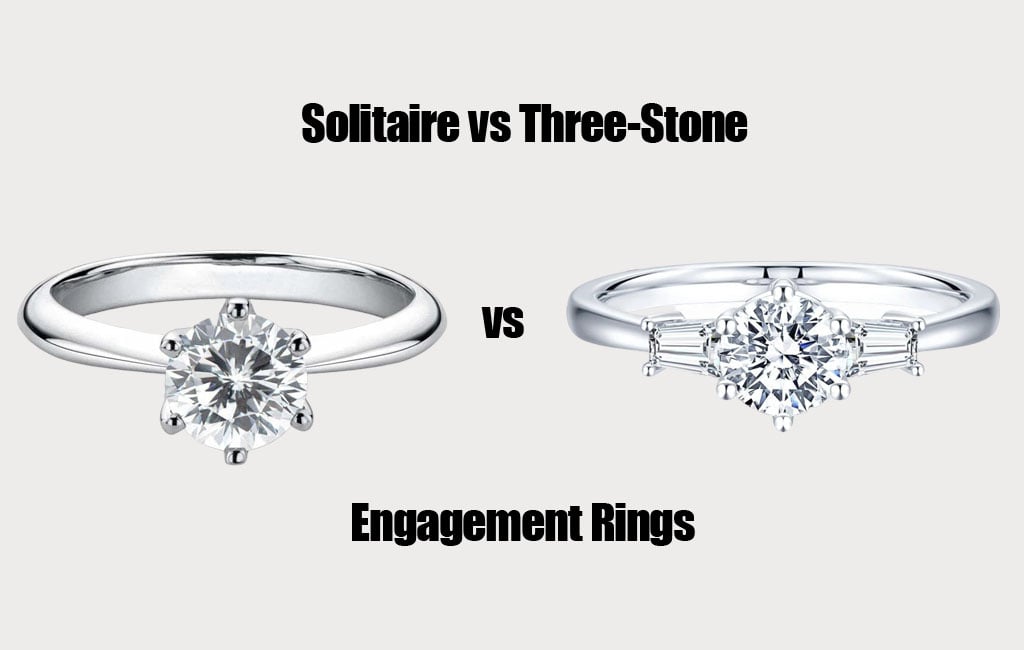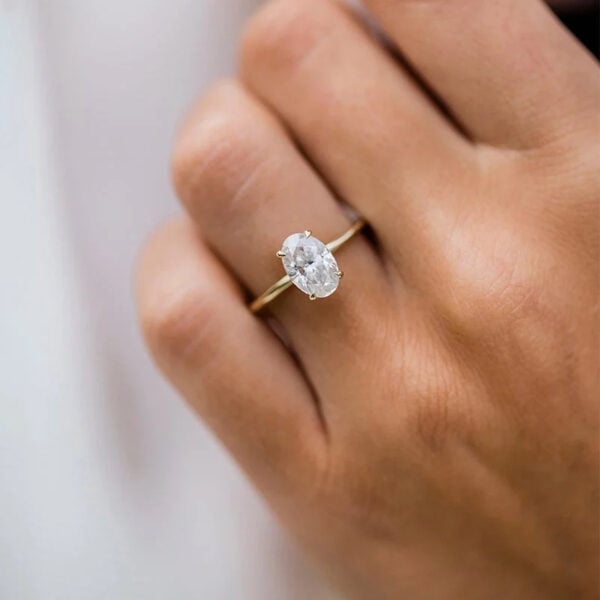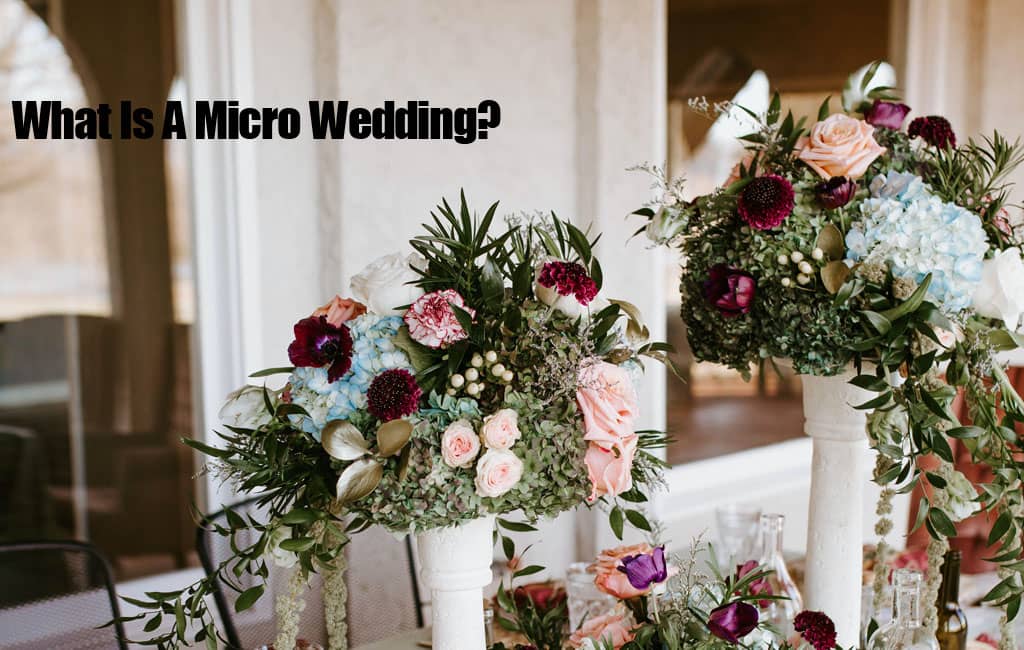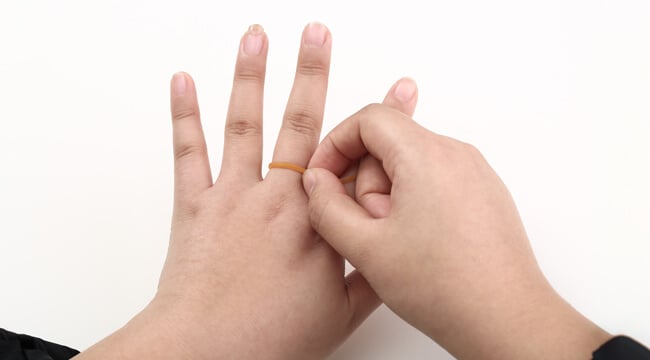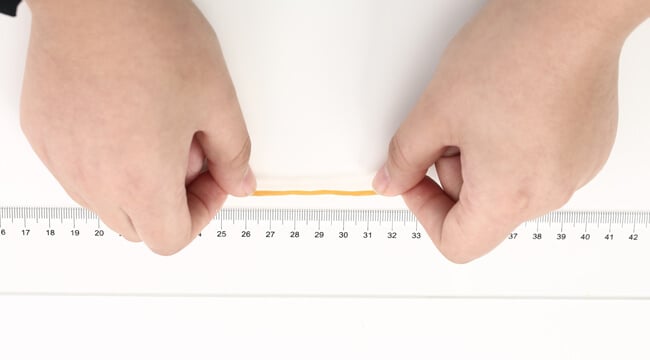Engagement rings hold a special place in the journey of love, symbolizing commitment and everlasting union. As couples embark on the exciting journey of choosing the perfect ring, the age-old debate of solitaire vs three-stone engagement rings takes center stage.
What Is a Solitaire Engagement Ring?
A solitaire engagement ring is a timeless and elegant choice, characterized by a single diamond or gemstone set in a metal band. This design focuses on showcasing the central stone, often a diamond, which becomes the ring’s focal point. The simplicity of the solitaire setting allows the gemstone to shine brightly, unobstructed by additional stones. The metal band, which can vary in width and style, complements the stone without overshadowing its beauty.
The beauty of solitaire rings lies in their versatility. They suit a wide range of personal tastes, from classic to modern styles. The setting can be crafted in various metals, including gold, platinum, and rose gold, each offering a distinct look. The choice of the diamond or gemstone cut also plays a significant role in the ring’s overall appearance. Popular cuts include round, princess, and oval, each imparting a unique brilliance and character to the ring.
Solitaire engagement rings are cherished for their symbolism of commitment and love. The singular stone represents the unique bond between two people. These rings are not only a declaration of love but also an embodiment of elegance and simplicity in design. Their enduring appeal makes them a favored choice for many couples seeking a timeless symbol of their union.
Oval Cut Moissanite Solitaire Engagement Ring
What Is a Three-Stone Engagement Ring?
A three-stone engagement ring, also known as a trilogy ring, features a trio of gemstones. This design typically showcases a central stone flanked by two slightly smaller stones. The center stone often represents the present, while the side stones symbolize the past and future, together conveying a romantic narrative of a couple’s journey.
The beauty of the three-stone ring lies in its versatility and symbolic depth. The stones can be all diamonds, or a combination of diamonds and other gemstones, allowing for a personalized touch. The choice of gemstones and their cuts can vary, creating a wide array of styles. For instance, a ring might feature a round brilliant diamond at the center with two sapphires on the sides, or it could have all three stones as emerald-cut diamonds.
This style of ring is not only visually striking but also rich in meaning. Each stone’s representation of time offers a profound emblem of a couple’s enduring love and commitment. The three-stone engagement ring appeals to those who seek a piece that combines aesthetic elegance with a story-telling element. Its design, while classic, offers ample scope for creativity and personal expression in the choice of stones and settings.
Solitaire vs. Three-Stone Rings
When pondering the choice between solitaire and three-stone engagement rings, it’s essential to delve into various facets such as cost, how they adorn the finger, and their sparkling allure. Let’s embark on a nuanced exploration of each aspect of these ring styles.
Price
Beginning with pricing considerations, one might initially presume that a solitaire, with its singular diamond, would inherently cost less. However, this assumption doesn’t always hold true.
In the realm of three-stone rings, the accompanying diamonds are generally smaller, and, surprisingly, their cumulative cost doesn’t skyrocket as one might expect. Thus, the price gap between these styles isn’t as wide as anticipated.
Of course, for those adhering to a stricter budget, solitaires tend to be the more economical choice.
Finger Coverage
Moving onto how these rings present themselves on one’s finger, three-stone designs undoubtedly claim a more prominent presence. Their trio of gems spans a broader area on the band, making a bold and unmistakable statement. For those seeking an engagement ring that captures attention and covers a significant portion of the finger, the three-stone ring emerges as a clear favorite.
Conversely, if your preference leans towards understated elegance, the solitaire, with its singular focus, offers a more delicate and refined option.
Brilliance
In comparing solitaire and three-stone rings, the influence of the diamond’s cut is paramount in defining their brilliance. For solitaire rings, which showcase a single diamond, the cut is especially crucial. This solitary diamond, being the centerpiece, relies heavily on its cut to maximize light reflection and refraction, leading to a pronounced sparkle. The precise cut of a solitaire diamond can significantly enhance its ability to capture and reflect light, making it a dazzling focal point.
In contrast, the brilliance of three-stone rings is shaped not only by the individual cuts of each diamond but also by how these cuts interact with each other. In these rings, the arrangement of the three diamonds, each with its unique cut, creates a complex interplay of light. This interaction leads to multiple angles of reflection, producing a rich, varied, and dynamic sparkle. The cut of each diamond in a three-stone setting is critical, as it contributes to the ring’s overall brilliance and the intricate display of light that characterizes these elegant pieces.
CHECK OUT DIFFERENT STYLES OF MOISSANITE ENGAGEMENT RINGS
Conclusion
In the timeless debate of solitaire vs. three-stone engagement rings, discerning the perfect choice hinges on understanding their distinct differences and unique advantages. The solitaire ring stands out with its extreme elegance, embodying a singular allure that is both classic and sophisticated.
Conversely, the three-stone ring captivates with its symbolic depth, offering greater room for customization, superior elegance, and enhanced versatility.
Ultimately, the decision is deeply personal and rests on the nuances of your love story. Whether drawn to the understated elegance of a solitaire or the intricate symbolism of a three-stone ring, the ideal choice is the one that resonates most with the essence of your individual journey.

